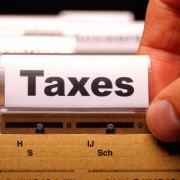Five Home Office Deduction Mistakes
If you operate a business out of your home, you may be able to deduct a wide variety of expenses. These may include part of your rent or mortgage costs, insurance, utilities, repairs, maintenance, and cleaning costs related to the space you use.
But the home office tax deduction is a tricky area of the tax code that is full of pitfalls. Some taxpayers are so wary of the deduction that they simply opt not to take it. If you’re in this group, read some of the most common mistakes and then get help.
- Not taking it. This is probably the biggest mistake those with home offices make. Some believe the deduction is too complicated, while others believe taking a home office deduction increases your chance of being audited. While the rules can be complicated, there are now simple home office deduction methods available to every business.
- Not exclusive or regular. The space you use must be used exclusively and regularly for your business.
Exclusively: If you use a spare bedroom as a business office, it can’t double as a guest room, a playroom for the kids, or a place to store your hockey gear. Any kind of non-business use can invalidate you for the deduction.
Regularly: It should be the primary place you conduct your regular business activities. That doesn’t mean that you have to use it every day nor does it stop you from doing work outside the office, but it should be the primary place for business activities such as recordkeeping, billing, making appointments, ordering equipment, or storing supplies.
- Mixing up your other work. If you are an employee for someone else in addition to running your own business, be careful in using your home office to do work for your employer. Generally, IRS rules state you can use a home office deduction as an employee only if your employer doesn’t provide you with a local office to work at.
Unfortunately, this means if you run a side business out of your home office, you cannot also bring work home from your employer’s office and do it in your home office. That would invalidate your use of the home office deduction.
- The recapture problem. If you have been using your home office deduction, including depreciating part of your home, you could be in for a future tax surprise. When you later sell your home you will need to account for this depreciation. This depreciation recapture rule creates a possible tax liability for many unsuspecting home office users.
- Not getting help. There are special rules that apply to your use of the home office deduction if:
You are an employee of someone else.
You are running a daycare or assisted living facility out of your home.
You have a business renting out your primary residence or a vacation home.
The home office deduction can be tricky, so be sure to ask for help, especially if you fall under one of these cases.
Things to remember
Recognizing the home office deduction complexity, the IRS created a simplified “safe harbor” home office deduction. You simply take the square footage of your office, up to 300 square feet, and multiply it by $5. This gives you a potential $1,500 maximum deduction. However, your savings could be much greater than $1,500, so it’s often worth getting help to calculate your full deduction.
Finally, if you are concerned about a potential future audit, take a photo or two of your home office. This is especially important if you move. That way if you are ever challenged, you can visually attempt to show your compliance to the rules.









